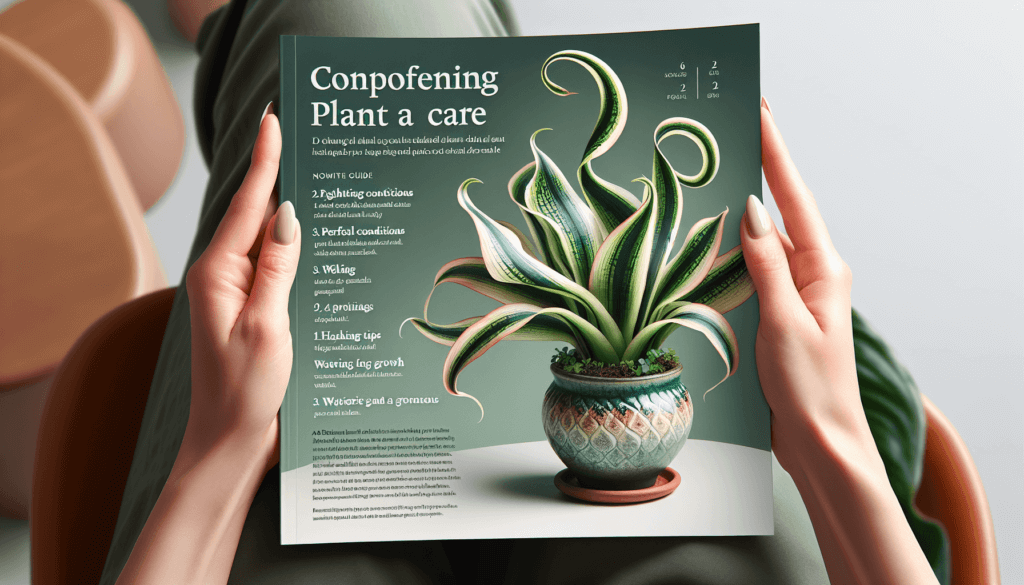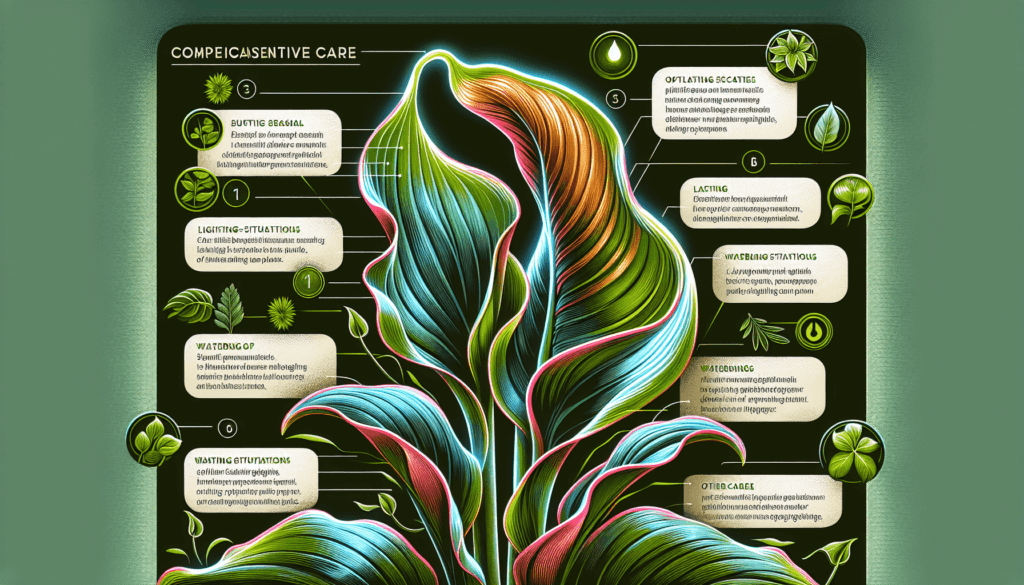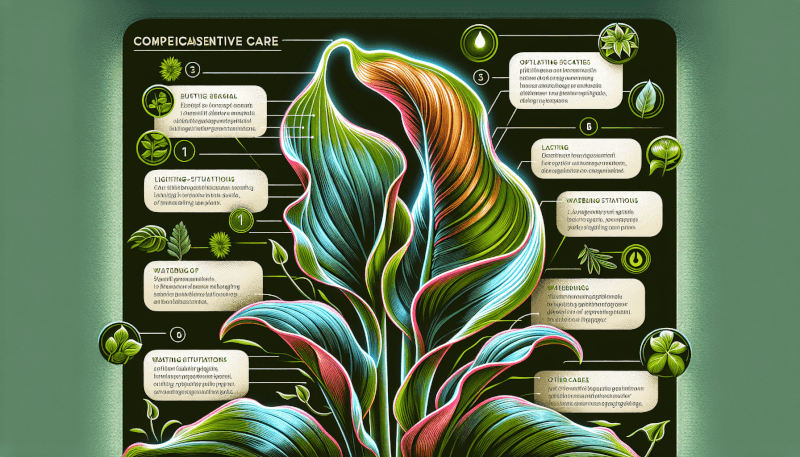Have you ever wanted to add a touch of exotic beauty to your indoor space? Look no further than the Dragon Tail Plant. This captivating plant, also known as Epipremnum pinnatum ‘Cebu Blue’, is sure to enchant with its unique, vibrant foliage and easy care requirements. From its glossy, arrow-shaped leaves to its cascading vines, the Dragon Tail Plant is a stunning addition to any home or office. So, if you’re ready to embark on a new green adventure, let’s delve into the world of Dragon Tail Plant care and discover how to keep this mesmerizing plant thriving in your space.

Light Requirements
Choosing the right location
When it comes to caring for a dragon tail plant, one of the most important factors to consider is providing the right amount of light. These tropical plants thrive in bright, indirect light, making them an ideal choice for indoor locations. When choosing a spot for your dragon tail plant, look for an area that has bright, filtered light throughout the day. Avoid placing it in direct sunlight, as this can cause the delicate leaves to burn.
Ideal lighting conditions
To ensure your dragon tail plant receives the ideal lighting conditions, consider placing it near a north or east-facing window. This will allow the plant to bask in the gentle morning sunlight without the harsh afternoon rays. If you don’t have access to a window with the right lighting conditions, you can also use artificial grow lights to supplement the natural light.
Avoiding direct sunlight
While it may be tempting to place your dragon tail plant near a sunny window, direct sunlight can be harmful to its delicate leaves. This can lead to burnt or yellowing foliage, which is not only unsightly but can also stunt the plant’s growth. To avoid this, provide your dragon tail plant with bright, indirect light instead. This will ensure that it gets the light it needs without the risk of damage.
Watering
Establishing a watering routine
Watering is another crucial aspect of dragon tail plant care. To establish a watering routine, start by checking the soil moisture. Stick your finger about an inch into the soil, and if it feels dry, it’s time to water your plant. Consistency is key when it comes to watering, so aim to water your dragon tail plant at regular intervals to prevent under or overwatering.
Checking soil moisture
To determine whether your dragon tail plant needs watering, it’s essential to check the soil moisture. As mentioned earlier, sticking your finger about an inch into the soil can give you a good idea of its moisture content. If it feels dry to the touch, it’s time to water. However, if it feels moist, wait a few more days before watering again.
Watering frequency
In general, a good guideline for watering your dragon tail plant is to water it approximately once a week during the growing season. However, it’s important to adjust the frequency based on the specific needs of your plant. Factors such as humidity levels, pot size, and room temperature can all affect how quickly the soil dries out. Observe your plant closely and adjust your watering schedule accordingly.
Avoiding overwatering
Overwatering can be detrimental to your dragon tail plant, leading to root rot and other issues. To avoid overwatering, make sure to allow the top inch or so of soil to dry out before watering again. Additionally, ensure that your plant is in a well-draining pot to prevent excess water from sitting at the bottom. If you notice any signs of overwatering, such as yellowing leaves or a foul odor, adjust your watering habits accordingly.
Humidity
Understanding the plant’s humidity needs
Dragon tail plants originate from tropical regions, where high humidity levels are the norm. To keep these plants happy and healthy in your home, it’s important to understand their humidity needs. Ideally, a humidity level of around 50-60% is recommended for dragon tail plants. If your home has dry air, especially during the winter months when indoor heating is active, you may need to take steps to increase the humidity around your plant.
Increasing humidity levels
There are several effective ways to increase humidity levels around your dragon tail plant. One method is to place a tray filled with water near the plant. As the water evaporates, it will raise the moisture content in the air. Another option is to group your plants together, creating a mini greenhouse effect where they collectively increase humidity. You can also use a humidifier to maintain consistent humidity levels.
Misting the leaves
Misting the leaves of your dragon tail plant is another great way to boost humidity levels. Fill a spray bottle with room temperature water and mist the foliage every few days. This not only helps keep the leaves hydrated but also creates a more humid environment around the plant. Be sure to avoid misting too close to the roots or overwatering the soil.
Using a humidifier
If you live in an arid climate or struggle to maintain adequate humidity levels in your home, investing in a humidifier is a worthwhile option. These devices release a fine mist of water into the air, helping to create an environment that mimics the tropical conditions dragon tail plants thrive in. Place the humidifier near your plant and adjust the settings to maintain the desired humidity level.
Temperature
Optimal temperature range
Providing the right temperature range is crucial for the health and growth of your dragon tail plant. These tropical plants prefer temperatures between 65-75°F (18-24°C) during the day. They can tolerate slightly cooler temperatures at night, around 55-60°F (13-15°C). Consistency is key, so try to avoid drastic temperature fluctuations.
Avoiding temperature extremes
Dragon tail plants are sensitive to extreme temperatures, so it’s important to protect them from both hot and cold conditions. Avoid placing your plant near drafty windows, air conditioning units, or heating vents, as the sudden temperature changes can stress the plant. Similarly, keep it away from direct heat sources, such as radiators or fireplaces, which can cause the leaves to dry out.
Protecting the plant during winter
During the winter months, it’s essential to shield your dragon tail plant from cold drafts and low temperatures. If you live in a region with harsh winters, consider moving your plant away from windows or providing additional insulation by placing it on a plant stand or adding a layer of bubble wrap around the pot. You can also reduce waterings slightly during this time, as the plant’s growth slows down in cooler temperatures.

Fertilization
Choosing the right fertilizer
To promote healthy growth and vibrant foliage, fertilizing your dragon tail plant is essential. When choosing a fertilizer, opt for a balanced formula specifically formulated for houseplants. Look for one with a ratio such as 10-10-10 or 20-20-20, as this will provide a good balance of essential nutrients.
Applying fertilizer
When it comes to applying fertilizer to your dragon tail plant, it’s important to follow the instructions on the product packaging. Dilute the fertilizer to half the recommended strength and apply it to the soil, making sure to avoid getting any on the leaves. Gently water the plant afterward to ensure the nutrients are evenly distributed.
Frequency of fertilization
During the growing season, which typically occurs in spring and summer, aim to fertilize your dragon tail plant every two to three weeks. This will provide it with a steady supply of nutrients to support its growth. As the plant enters its dormant period in fall and winter, reduce the frequency to once a month or halt fertilization altogether.
Avoiding overfertilization
While fertilizing is important, it’s equally crucial to avoid overfertilization. Too much fertilizer can burn the roots and damage the plant. If you notice any signs of fertilizer burn, such as leaf discoloration or wilting, flush the soil with water to help dilute the excess nutrients. Adjust your fertilization frequency accordingly to prevent further damage.
Pruning
Removing dead or damaged leaves
Regular pruning is essential for maintaining the overall health and appearance of your dragon tail plant. Start by inspecting the plant regularly and removing any dead or damaged leaves. This not only enhances the plant’s aesthetic appeal but also prevents the spread of diseases or pests.
Maintaining desired shape
Pruning can also help you maintain the desired shape of your dragon tail plant. If you notice any branches or stems growing in undesirable directions, trim them back to encourage a more compact and symmetrical growth pattern. Be sure to use clean, sharp pruners to avoid causing any unnecessary damage to the plant.
Pruning for better growth
Pruning can also stimulate better growth in your dragon tail plant. If you want your plant to grow bushier or produce more branches, consider selectively pruning the tips of the stems. This encourages new growth and helps create a fuller, more lush appearance. Remember not to remove more than one-third of the plant’s foliage at a time, as this can weaken the plant.
Support and Training
Providing structural support
In their natural habitat, dragon tail plants climb on trees and other structures for support. To replicate this in your home, consider providing some form of structural support for your plant. This can be as simple as a moss pole or a trellis that the plant can cling to as it grows. Providing support not only helps maintain the shape of the plant but also prevents it from sprawling or becoming unruly.
Using stakes or trellises
Staking or trellising your dragon tail plant can be particularly beneficial if you want it to grow vertically. Secure the plant to the stake or trellis with soft plant ties, being careful not to tie them too tightly. As the plant grows, continue to adjust and reposition the ties to ensure the stems are supported adequately.
Training the plant to climb
If you prefer a more climbing look for your dragon tail plant, you can train it to climb along a structure or wall. Gently guide the stems in the desired direction, and use plant ties to secure them to the support. Be patient and avoid forcing the plant to grow in a way that goes against its natural inclination.
Pests and Diseases
Common pests affecting dragon tail plants
Like any other houseplant, dragon tail plants can be susceptible to pests. The most common pests that may infest these plants include spider mites, mealybugs, and aphids. These pests can cause damage to the leaves, stunting growth and affecting the overall health of the plant.
Identifying and treating pest infestations
To identify a pest infestation on your dragon tail plant, inspect the leaves and stems closely for signs of small insects, webs, or sticky residue. If you notice any of these signs, it’s important to take action promptly. Use an organic insecticidal soap or neem oil spray to treat the affected areas, ensuring that all surfaces are adequately covered. Repeat the treatment as necessary until the pests are eliminated.
Preventing diseases
Prevention is key when it comes to protecting your dragon tail plant from diseases. Ensure that the plant is in a well-ventilated area, as good airflow helps reduce the risk of fungal infections. Avoid overwatering, as this can create a conducive environment for diseases to develop. Additionally, make sure to keep your plant away from any infected or sick plants to prevent the spread of diseases.
Dealing with common diseases
One common disease that can affect dragon tail plants is root rot, which occurs when the roots are consistently exposed to excess moisture. To prevent root rot, ensure that your plant is in a well-draining pot and adjust your watering habits accordingly. If root rot does occur, it may be necessary to take cuttings from healthy parts of the plant and propagate them to save the plant.
Propagation
Methods of propagating dragon tail plants
Propagating dragon tail plants is relatively straightforward and can be achieved through several methods. The most common methods include stem cuttings and propagation in water or soil. Both techniques have their own advantages, so choose the method that suits your preferences and resources.
Taking stem cuttings
To propagate your dragon tail plant using stem cuttings, start by selecting a healthy stem with several leaves. Use clean, sharp pruners to cut the stem just below a node. Remove the lower leaves, leaving a couple of leaves at the top. Dip the cut end in rooting hormone, if desired, and place the cutting in a potting mix or propagate in water until roots develop.
Propagating in water or soil
Whether you choose to propagate your dragon tail plant in water or soil depends on personal preference. To propagate in water, place the stem cutting in a glass or jar filled with water, making sure that the nodes are submerged. Change the water every few days to prevent bacterial growth and wait for roots to develop before transferring the cutting to soil.
If you prefer to propagate in soil, plant the stem cutting in a well-draining potting mix. Keep the soil moist, but not overly saturated, and place the pot in a warm, bright location. Roots should form within a few weeks, at which point you can treat the cutting as a mature plant and care for it accordingly.
Potting and Repotting
Choosing the right pot
Choosing the right pot for your dragon tail plant is essential for its overall health and growth. Opt for a pot that has drainage holes to prevent water from pooling at the bottom and potentially causing root rot. Additionally, choose a pot that is appropriately sized for the current size of your plant, leaving some room for growth.
Selecting suitable potting mix
Dragon tail plants prefer a well-draining potting mix that retains some moisture while allowing excess water to drain away. A mix that includes components such as peat moss, perlite, and composted bark is ideal. Avoid using heavy or compacted soil that can retain too much moisture, as this can lead to root rot.
Repotting when necessary
Knowing when to repot your dragon tail plant is crucial for its continued health and development. As a general rule of thumb, repotting is necessary when the plant becomes root-bound, meaning the roots have filled the current pot and start to grow in a circular pattern. Signs of a root-bound plant include stunted growth, frequent wilting, and roots emerging from the drainage holes. When repotting, choose a pot that is slightly larger than the current one, allowing room for the roots to spread out. Gently loosen the roots, remove any dead or rotted sections, and place the plant in the new pot, adding fresh potting mix around it. Water thoroughly and resume regular care.


